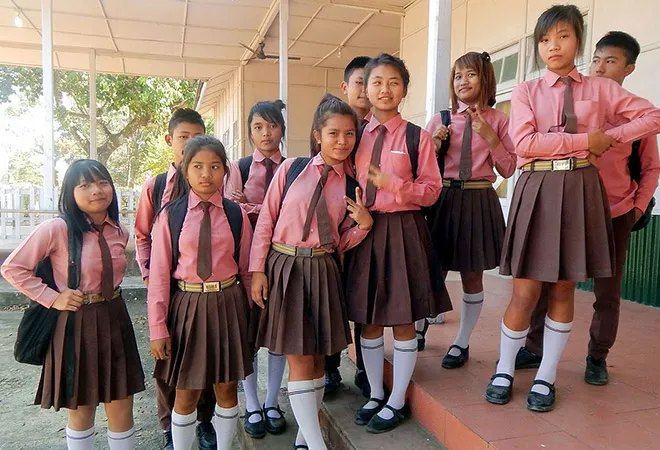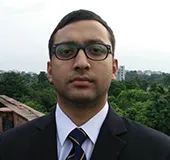
Education is a lifelong process which starts at the cradle and ends in the grave. The brain of a child is highly active in the first few years of his life. According to the National Institute on Deafness and Other Communication Disorders (NIDCD) of the US, the first three years of life is the most intensive period for acquiring speech and language skills. Hence any public policy should specially attend to this vital quarter in terms of providing rich exposure as well as ensuring good health for the child.
As the child grows up, a dedicated education plan should be pursued for him. In the period up to the age of six years, the brain grows to 90% of its adult size. The events experienced by the child during this time create a powerful impression on his perception, intelligence and behaviour for the rest of his life. Even when applying Jerome Bruner’s brilliant ‘spiral curriculum’ model of learning, the foundation for future reinforcement of learned concepts as well as analogy-making skills are established by the child in this very phase of his education.
Presently, India only has an Early Childhood Care and Education (ECCE) policy for the 0-6 years age group, but no legislation. The Right to Education (RTE) Act, which provides for free and compulsory education to all children from 6 to 14 years of age, also lays down that necessary arrangement be made by the State governments to provide free pre-school education for children between 3-6 years of age. In rural areas, some local schools have partnered with Anganwadi centres to comply with this clause. However progress on this front has not been up to the mark. A recent committee constituted by The Central Advisory Board of Education (CABE) has recommended including pre-school and secondary school within the ambit of the RTE Act. This is a much needed reform. The RTE Act, 2009 was hailed as the most radical initiative in the education sector after the Sarva Shiksha Abhiyan (SSA) (launched in 2000-01), particularly because it gave a legal backing to the magnificent objectives of the SSA and an expression to the stoutly enforceable Article 21A of the Indian Constitution. Also, the recent National Policy on Education, 2016 drafted by the TSR Subramanian Committee had made many multi-dimensional recommendations which must be taken up for legislation.
The government has also merged the SSA, Rashtriya Madhyamik Shiksha Abhiyan (RMSA) and Teachers’ Education (TE) scheme into a single Samagra Shiksha Abhiyan for all students from classes 1 to 12, in a move to eliminate duplication of effort and resources and to holistically implement the Education goal (Sustainable Development Goals-4) of United Nations Development Programme (UNDP).
This is a commendable step. Similarly, Rashtriya Uchchatar Shiksha Abhiyan (RUSA), the Higher Education Financing Agency (HEFA) and the grants function of Ministry of Human Resource Development should be combined into one for all higher education funding. Lesser the number of hops to commission a policy on ground, better the governance.
Let me now plunge into what I consider the most utilitarian part of any analysis: namely the possible solutions and the way forward. In this case, I propose a unified model for education in the country. This model is centred around the notion of Public-Private Partnership (PPP). Various PPP models are being used indispensably in the highway infrastructure and other projects of the government. Education is also a very large scale industry in India and equally deserves the PPP prototype. For the establishment and operation of schools and universities, the government should provide land, resolve the involved resettlement issues, provide tax rebates and funds to the private partner to subsidise the tuition fees of all the students, set up the norms, guidelines and curriculum as well as enforce strict monitoring, follow-up and penalising measures. The private partner in any such PPP organisation should undertake building new institutes and revamping the existing ones, operating and maintaining them, collecting and appropriating the tuition fees as well as undertaking regional Corporate Social Responsibility (CSR) activities.
There should be a single design for all schools throughout the country. The private partners may differ in each school but the appearance and operations of all schools should be utterly indistinguishable from each other because of strict adherence to defined common standards.
Such a technique is employed in a number of modern companies which follow the same Total Quality Management (TQM) and Total Productive Management (TPM) benchmarks in their offices across different regions. Providing clean toilets, impeccable waste disposal mechanisms, ensuring proper drainage, perfect roads leading to the school, necessary tree cover in the area, etc should be given top priority for all the schools. This entire blueprint should also be followed for the universities. All government and private schools and universities, as well as other educational institutions should be fused into this one PPP type. This will bring in a powerful uniformity of top-notch educational standards for all up to the remotest districts of the country.
I am personally not in favour of the present scheme of reservation in education. I would prefer a combination of affirmative action in ensuring equality of resources and the equality of capability as envisioned by Amartya Sen. Positive discrimination to ensure equality of welfare has some bothering demerits. Now, in today’s higher education, the major disparity at entry level in colleges is not due to the difference in the category of students but rather due to variation in the quality of their past education brought forward from their higher secondary schooling, especially in their command over English language. This disparity is not addressable with the present system of reservation and is difficult to overcome by any remedial coaching. This state of affairs calls for all schooling to be mandatorily done with English as the first language and with provision to study other Indian languages as an addition.
Sanskrit as an ancient unifying language should be made a compulsory subject in the school. Moreover the students should be exposed to spiritually strengthening education with Yoga, meditation and moral science as a mandatory part of the curriculum right from pre-school till the end of university.
The higher secondary curriculum should include essential rules of law relating to social living, road safety and traffic, basic health and hygiene norms. Contributions of national heroes from all Indian states should be taught to infuse patriotism and love for India and its people. In today’s society of nuclear families and busy lives, schools are the only social structures able enough to deeply enroot a firm foundation of value system in the students. And then, a well educated population is the basis for solving all problems in the society.
The next focus area should be academia-industry partnerships. All universities teaching technical courses have laboratories and research groups. The same are also present in the R&D divisions of big industries, albeit more advanced and aimed towards commercialisation. There should be maximum possible overlap between the two: in other words, industries should partner with universities to open common R&D centres on campus. Under this design, the industries should specially train the final year students of the university they wish to absorb, to seamlessly transition to the company without any need for additional trainings after joining. This will remarkably increase the employability of the pass-outs on one hand and reduce the extra resource expenditure on comprehensive paid trainings by the industry on the other. A gradual industrialisation of the syllabus of technical courses will also set in. Inspiration on this front should be drawn from the relation between the Indian Institute of Space Science and the Technology-Indian Space Research Organization and also from the expected collaboration of the recently inaugurated the National Rail and Transportation University, Vadodara with the Indian Railways. Medical colleges usually have an attached hospital and so the transition is relatively easier for them already. The changeover from school to college should also be made smooth. For that, the syllabus, nature and difficulty-level for the 12th standard board exam should match that of the competitive examinations like JEE-MAIN, NEET-UG, etc so much so that bodies like Central Board of Secondary Education (CBSE) feel it unnecessary to organise separate college entrance exams. This will make school classroom studies more meaningful to the students as well as reduce their stress of appearing for multiple exams. The very need for out-of-the-school coaching institutes will also plummet.
Lastly, education should be digitised. Under the proposed PPP model, there shall be a massive hike in the enrolment ratio at all levels of education. There is a palpable paucity of quality faculty, especially in universities.
So to ensure that all students in the country be exposed to equally good teaching as well as to limit the overall cost of education, there should be teaching through video conferencing in technology based classrooms with real-time student-teacher interaction. This operation can be meshed with the Bharat Net project. It may also relax the pupil-teacher ratio requirement by two to three times.
Outside the family, the Teacher is the principal entity for any child throughout his growing and learning years. His job requires proper qualification and a strenuous dedication. Thus in order to keep him going, especially in the rural and remote regions of India, it is necessary to increase his remuneration, provide him facilities and a congenial atmosphere to develop and deliver. It is therefore imperative for the government to devise policies in the best interests of the teacher, child and the society at large.
The views expressed above belong to the author(s). ORF research and analyses now available on Telegram! Click here to access our curated content — blogs, longforms and interviews.




 PREV
PREV


